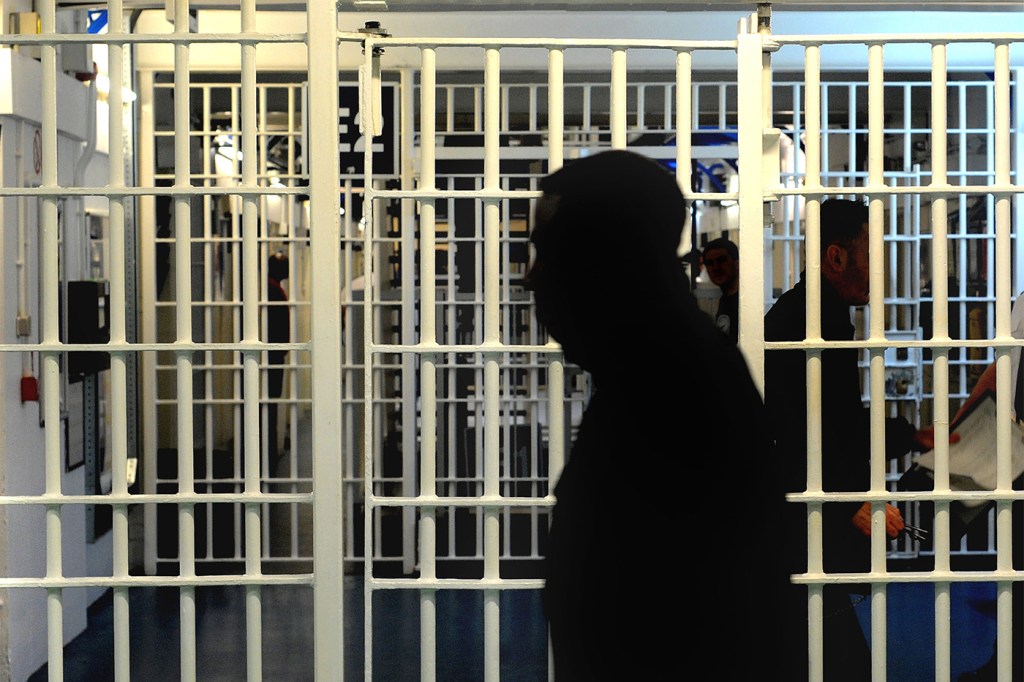Jails in Britain are so full that prisoners are having to be let out early. This criminal justice expert explains what is happening
Luiz Artur Costa do Valle Junior, an assistant professor in law at Northeastern University in London, explains how the prisons crisis has unfolded.

LONDON — Prisons in England and Wales are full to the rafters.
Government figures show that as of July 12, the prison population stood at 87,500, putting it at 98% capacity with fewer than 1,500 spaces left. It is predicted that prison spaces will run out in weeks at the current rate of arrests and convictions.
But those figures do not tell the entire story. The prison service calculated that, as of June, the limit of being able to provide a “good, decent standard of accommodation” stood at almost 79,700. The current population is close to being 8,000 over level.
Charlie Taylor, his majesty’s chief inspector of prisons, told The Spectator magazine this month that the newly elected prime minister and his governing Labour Party faced a “serious prison population crisis.”
He said the “most immediate problem” was with the “backlog of remanded prisoners” — a reference to the buildup in prisons since the COVID-19 pandemic of arrested people deemed too risky to be on the streets while they await court trials.
Taylor added: “The longer-term issue is with the high volume of prisoners serving increasingly lengthy sentences — despite public perceptions that judges are too willing to let criminals off lightly.”
Prime Minister Keir Starmer, a former director of public prosecutions, took the situation seriously, choosing to hold his first press conference about the issue only days after his July 4 election win.
Justice Secretary Shebana Mahmood has since announced changes to alleviate overcrowding by slashing the duration of time that convicts will spend in prison.
In England and Wales, those handed jail sentences have traditionally spent 50% of their sentence behind bars before being released on license, subject to certain conditions.
Featured Posts
The Labour government will “temporarily” reduce that to 40% from September, Mahmood announced. There will be some exclusions for those serving sentences for serious violent offenses and sexual offenses.
Luiz Artur Costa do Valle Junior, an assistant professor in law at Northeastern University in London, explains how the situation has come about. His comments have been edited for brevity.
Why is it that prisoners do not serve their entire sentence in England and Wales?
Firstly, the law dictates that they should be.
This doesn’t mean that people released under these mechanisms are entirely free from criminal justice supervision. Prisoners are released on license, which means that, from that point on — and until the end of their sentence, plus any additional supervision time if applicable — they serve their sentence in the community. They have to comply with certain conditions, for instance seeing a probation officer regularly and not committing any more offenses, or else they might be recalled into custody.
If we broaden our view a bit, however, we can say that prisoners are released early because early release is a feature of modern, Western criminal justice systems that place emphasis on working towards rehabilitation. That period spent under license conditions in the community is seen as being part of that.
Why has the new Labour government taken the step of shortening the amount of their sentence that some prisoners spend in jail from 50% to 40%?
The short answer is that prisons are at risk of reaching capacity. According to a July 8 research briefing written for the House of Commons, 60% of English and Welsh prisons were already crowded — meaning that the number of prisoners they held exceeded the amount they can accommodate to a decent standard.
Another way of measuring prison capacity, however, is operational capacity. That is the total number of people the prison estate can hold in light of control, security and operational considerations, which is determined by the Prison Group Directors. According to this measure, the prison estate has been hovering between 99% and 100% occupancy since at least the beginning of 2023.
If the prison estate exceeds its operational capacity, there are fears that, besides existing problems in respect of prisoner well-being and respect for prisoners’ rights, as well as the possibility of violence increasing in prisons themselves, further problems with public safety might arise.
Fears have been raised in the media that the courts would have to stop prosecuting offenders, that police would have to stop arresting potential offenders and that criminality would run rampant.
What are the factors that have caused prisons in England and Wales to almost reach capacity?
Prison overcrowding is invariably a result of too many people being sent to prison, and/or kept in prison for too long.
The number of people incarcerated in England and Wales is at a historical high and the proportion of people incarcerated in relation to the general population is also at its highest ever.
Prison populations rose consistently between the 1940s and the early 1990s, and then steeply from the early to mid-1990s to today — a rise that is projected to continue unless criminal justice policy changes.
One counterintuitive aspect of the current crisis is that there is good reason to believe that the historical rise in rates of imprisonment is not motivated by a corresponding rise in crime rates.
Between 1995 and 2023, overall crime rates, as recorded by the Crime Survey for England and Wales, have been decreasing consistently. This includes violence and theft offenses, though not necessarily sexual offenses, including rape and sexual assault.
Parallel to this decrease in overall offending, a higher proportion of trials for serious offenses now results in an immediate custodial sentence — and custodial sentences for these categories of offenses have increased in length. Between 2002 and 2022, the average custodial sentence length for these classes of offenses increased from 15.5 months to 24.6 months.
This means that, broadly speaking, the growth in prison populations does not necessarily come as a response to a proportional growth in crime. Rather it seems that criminal justice policy has become increasingly punitive despite decreasing crime rates.
What are the alternatives to tougher prison sentences and how viable are they?
Not to be facetious, but one such alternative is simply to not impose such tough sentences. The belief that imprisonment is the only solution to criminality — indeed that it is a solution at all — should, I think, be treated with some more skepticism by the public and by policymakers.
There is no doubt that imprisonment plays an important part in modern criminal justice systems, especially in respect of serious violent and sexual offending, but criminologists have long been of the opinion that the prison environment is also itself criminogenic.
It may contribute to the continuation of offending careers, for example, by enforcing social proximity among people who have committed crimes, allowing them to share values and skills, and to establish social networks that may facilitate further criminality.












